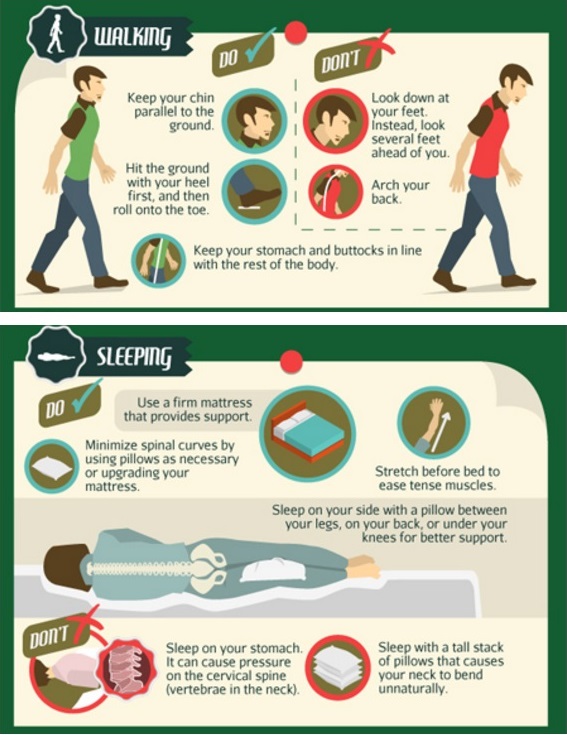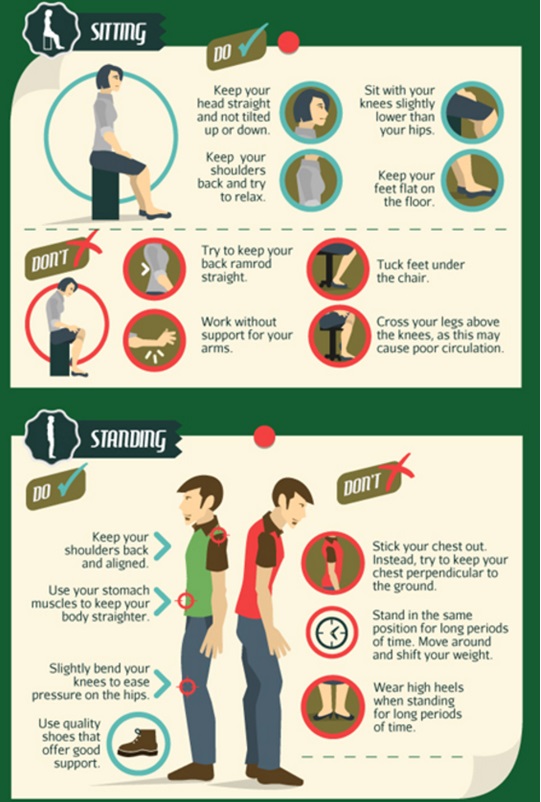Good Posture…just how important is it?
Posture ranks right up at the top of the list when you are talking about good health. It is as important as eating right, exercising, getting a good night’s sleep and avoiding potentially harmful substances like alcohol, drugs and tobacco. Good posture is a way of doing things with more energy, less stress and fatigue. Without good posture, you can’t really be physically fit. The good news is that most everyone can avoid the problems caused by bad posture…and you can make improvements at any age.
Good posture means your bones are properly aligned and your muscles, joints and ligaments can work as nature intended. It means your vital organs are in the right position and can function at peak efficiency. Good posture helps contribute to the normal functioning of the nervous system.
Without good posture, your overall health and total efficiency may be compromised. Because the long-term effects of poor posture can affect bodily systems (such as digestion, elimination, breathing, muscles, joints and ligaments), a person who has poor posture may often be tired or unable to work efficiently or move properly.
Poor Posture & Pain
Did you know that just fifteen minutes reading or typing when using the wrong positions exhausts the muscles of your neck, shoulders and upper back? A lifetime of poor posture can start a progression of symptoms in the average adult. It can start with…
Fatigue – your muscles have to work hard just to hold you up if you have poor posture. You waste energy just moving, leaving you without the extra energy you need to feel good.
Tight, achy muscles in the neck, back, arms and legs – by this stage, there may be a change in your muscles and ligaments and you may have a stiff, tight painful feeling. More than 80% of the neck and back problems are the result of tight, achy muscles brought on by years of bad posture.
Joint stiffness and pain – at risk for “wear and tear” arthritis, or what is termed degenerative osteoarthritis. Poor posture and limited mobility increase the likelihood of this condition in later years.
Lifestyle Tips for Lifelong Good Posture
- Develop a regular program of exercise – regular exercise keeps you flexible and helps tone your muscles to support proper posture.
- Buy good bedding – a firm mattress will support the spine and help maintain the same shape as a person with good upright posture.
- Pay attention to injuries from bumps, falls and jars – injuries in youth may cause growth abnormalities or postural adaptations to the injury or pain that can show up later in life.
- Have your eyes examined – a vision problem can affect the way you carry yourself as well as cause eyestrain.
- Be conscious of where you work – is your chair high enough to fit your desk? Do you need a footrest to keep pressure off your legs? If so, speak with your Manager to see how you may be accommodated.
- If you feel discomfort and pain related to specific activities, visit your Doctor of Chiropractic periodically for spinal checkups and for a postural evaluation.
Please review the following examples to help you correct your posture:


